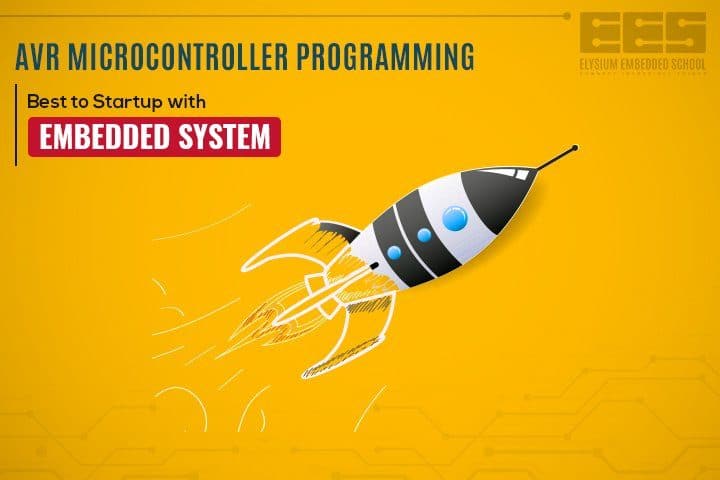
Kamaraj College of Engineering
June 21, 2020
Blast through Raspberry Pi Training in Some Home Automation and IOT
June 25, 2020Table of Contents
AVR Microcontroller Programming
AVR microcontroller programming: Basically, the technology all starting with the alternation of natural resources into various tools for most comfortable and luxurious life. Particularly, with the creation of microprocessors and microcontrollers a modern and advance society also transforming that is going to develop day by day.
AVR Microcontroller Programming – Here, you can get to grips with AVR Microcontroller. Become familiar with just about every aspect of AVR microcontroller. Which are the primary options that come with AVR programming? And also, architecture of AVR microcontroller. Here you will probably understand about the programming approach of it. Additionally, basic overview of software AVR studio.
Overview of Microcontroller
In other words, AVR microcontroller is highly developed version minicomputer built-in on the small chip using a processor, memory and programmable input/output peripheral devices. The primary objective of AVR microcontroller is always to give a digital control of any system. To point out, Electrical, mechanical or automotive, various devices, commercial plants and a lot of electronic gadgets and appliances. Generally speaking, AVR microcontroller programming is the first on-chip flash memory enters in 8-bit, 16-bit, 32-bit integrated chips.
History of Advanced AVR Microcontroller
Basically, it is leading-edge and innovative microcontroller was developed by ATMEL in 1996. And its architecture was the first envisage by two students Alf-Egil Bogen and Vegard Wollan at Norwegian Institute of technology. Indeed, so only AVR is stands for Alf-Egil Bogen and Vegard Wollan’s RICS (reduced instruction set computing) microcontroller. AVR microcontrollers have into several groups.
Generally, there are several AVR family microcontrollers, such as ATmega8, ATmega16, ATmega32 and more. And also, the microcontroller has different applications for electronic equipment like mobile phones, automobiles, washing machines, cameras, security alarms and more.
What are the Classification Types of AVR Controllers?
- Classic AVR (AT90SXXXX)
- Tiny AVR (ATtinyXXXX)
- Mega AVR (ATmegaXXXX)
- Xmega AVR (ATXmegaXXXX)
- Application-specific AVR
- 32-bit AVR
Additionally, AVR studio with various versions is built-in advancement environment by ATMEL to build up multiple applications according to needs. And also, networking is main thing for every individual system. And, the hardware training is highly used for networking sector. Able to make use of C language or assembly language to built-up codes for AVR microcontroller programming.
Which are the Features of AVR Microcontroller?
- Multifunction
- Multiple internal oscillators
- Flash memory up to 256 KB
- Internal data EEPROM up to 4 KB
- Internal SRAM up to 16 KB
- Two timers are 8 bit, and one timer is 16 bit
What are the Steps to Built-up Project on AVR Studio?
- Initially starts the AVR studio and chooses the new project option.
- Get into project name and pick AVR GCC, enter in location after that click next.
- Choose your debug platform (AVR simulator) and needed device (AtmegaXX) and click on finish.
- A window will open up, just click project button and check out setting option, pick your needed choices and click OK.
- Write your necessary code in the primary window.
- For compilation choose the build button and check out compile option. In case there is error compiling will fail.
- At the same time, the generation of HEX file maintains the program into AVR microcontroller. Just for this, you ought to dump the HEX file into AVR by using a programmer. The ordinary programmers used for AVR microcontroller is AVRISP and AVRISP2.
What are the Best Applications of AVR Microcontroller?
In general, there are many applications of AVR microcontroller such as home automation, touch screen, automobiles, medical devices, and more.
Can use it for many types of project applications such as:
- For signal sensing
- Data acquisition
- Motion control
- For displays on LCD
- To interface motors, GSM and GPS
- To automize heavy machinery
- For developments of UAVs (unmanned aerial vehicles)
Nowadays, advanced training and courses are available in embedded systems. It is developing for real-time application programs. To clarify, it is used in the gap between conventional resources and machines.










